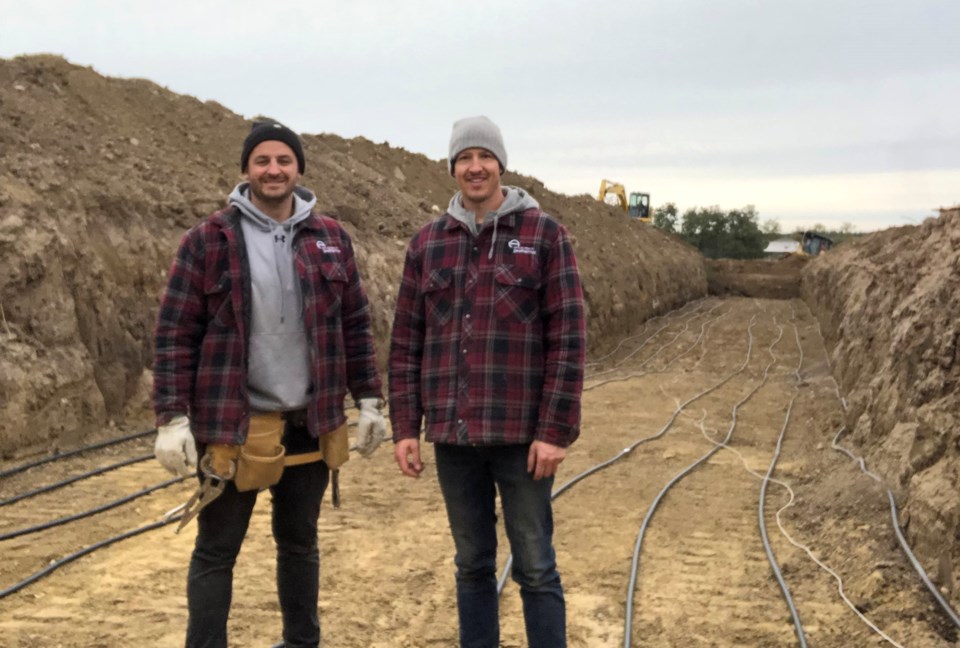LAKELAND - After working in the oil and gas sector for a number of years, Steve Oslanski was eventually drawn to a different type of energy. He admits, at first he was on the defensive.
But, after learning and being exposed to the benefits of geothermal energy, Oslanski has been won over by the renewable energy source.
Oslanski says his brother-in-law started Envirotech Geothermal back in 2006. Before joining the company himself, Oslanski was a landman, working in the Elk Point area, and then later moving on to other roles and eventually finding himself involved with geothermal projects.
He says he quickly learned there were many benefits to geothermal energy, and views it as a way to provide a more sustainable planet.
“Renewables and green energy is definitely the direction for the future.”
Geothermal energy is picking up traction in Alberta, and even in the Lakeland specifically. This fall, Envirotech Geothermal even did an installation at a residential property located between St. Paul and Elk Point.
The renewable energy can be used for both heating and cooling, and is a draw for those who may be facing large costs to bring natural gas to a property, for example.
He acknowledges that many people are simply used to using fossil fuels to heat their homes, and they may not be aware of alternatives.
"There are other ways to heat and cool your home."
Envirotech Geothermal specializes in the use of ground source heat pumps, which Oslanski says is the only way to do renewable air conditioning. A power source is required to make the system work.
Right now, the company is mostly taking on residential projects.
When asked about the costs associated with setting up a geothermal system, Oslanski explains that the upfront costs are mostly associated with the ground loop that needs to be installed. An exact costs is tough to peg, since it depends on a number of factors, such as the house itself that is being heated and cooled. In the life cycle of the ground source heat pump versus a natural gas furnace, Oslanski says it can be much more cost efficient to do ground source heating.
Describing how projects may look, he explains that there are multiple ways to do a ground loop. To do it horizontally, you need to have enough area, and that is the most cost effective process. The project completed in the St. Paul area in the fall was done this way and was considered an eight tone horizontal ground loop, requiring 80x100 feet of space.
Pipes are buried six feet below the ground, and should be done in an area that does not see a lot of vehicle traffic.
"There's flowing water and ethanol mix in those pipes," explains Oslanski.
Generally, it takes under a week to complete a residential project. When speaking with Lakeland This Week, Oslanski said Envirotech was in talks with a potential client from the Bonnyville region who was interested in doing a lake loop near Moose Lake. Of course, a project like that has additional regulations to navigate through.
The first step for someone who is interested in pursuing a geothermal project is to connect with a company that specializes in it. From there, the right people will work to ensure the system is properly size, and will determine the heating load for the residence.
When asked about the benefits of geothermal, Oslanski explains a well-done system can create better airflow in a home, and minimizes cold spots in the residence.
Oslanski says he's noticed an increase in interest in geothermal energy, specifically over the past two years, and other the past year the business has grown substantially.
“People are more mindful of the environmental impacts nowadays," he says, adding financial implications such as the carbon tax are also things people consider when moving toward renewable energies.
Education is also another key piece. The company has had a number of conversations with universities and colleges that have developed renewable energy programs for their students. Some municipalities are also offering incentives for going green, along with other levels of government.
While the movement toward renewable energies is clear, “it is a transition," acknowledged Oslanski. Electricity used for the heat pump sometimes comes from coal, but work continues to take place to move forward.
It's been just over a year since Bill 36: the Geothermal Resource Development Act was given royal assent, Dec. 9, 2020.
"Bill 36 establishes a legislative foundation for a robust and effective regulatory framework to enable further development of the resource," according to the Government of Alberta.
The bill outlines rules and processes for industry to ensure geothermal resources are developed responsibly and in the best interests of Albertans. It also established the legislative authority for land use and liability management, along with protecting landowners and mineral rights owners.



